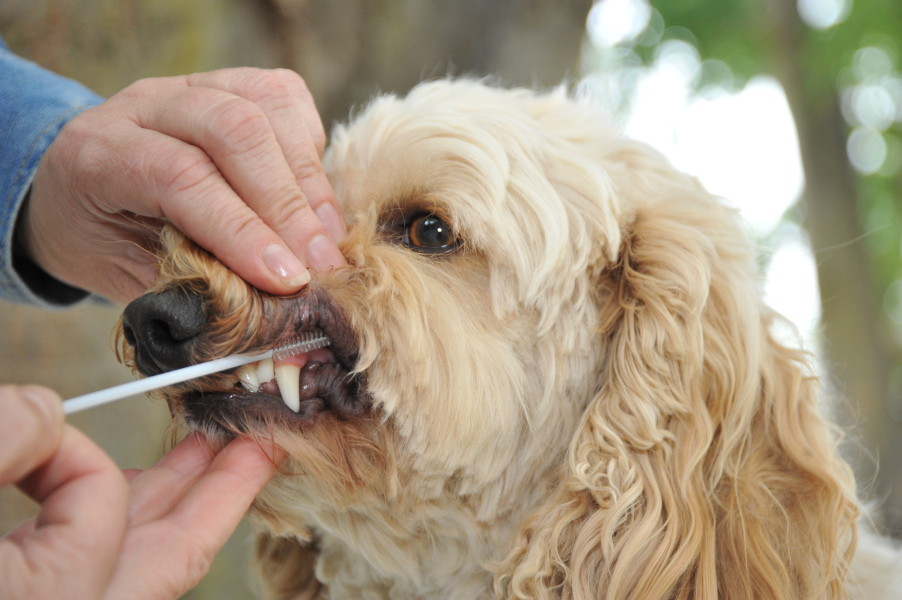Quick Summary
Click here for Price and Turnaround Time
Phenotype: Musladin-Lueke Syndrome (MLS) is a genetic disease of the Beagle that affects the development and structure of connective tissue. It is multi-systemic, with involvement of multiple organs, including bone, heart, skin, and muscle. Signs may include small size, skin that is thick and taut, reduced joint mobility, broadened skull with slanted eyes set wide apart, and an abnormal "tip-toe" gait.
Mode of Inheritance: Autosomal recessive
Alleles: N = Normal, MLS = Musladin-Lueke syndrome
Breeds appropriate for testing: Beagle
Explanation of Results:
- Dogs with N/N genotype will not have Musladin-Lueke syndrome and cannot transmit this variant to their offspring.
- Dogs with N/MLS genotype are unaffected carriers of the causal variant for Musladin-Lueke syndrome. They will transmit this variant to 50% of their offspring. Matings between two carriers are predicted to produce 25% Musladin-Lueke syndrome-affected puppies.
- Dogs with MLS/MLS genotype will have Musladin-Lueke syndrome, a multi-systemic connective tissue disease.
Results of this test can be submitted to the OFA (Orthopedic Foundation for Animals)
Beagle Health Panel
$130 per animal
Sample Collection
Dog DNA tests are carried out using cells brushed from your dog's cheeks and gums. The preferred cytology brushes are sent to you by mail, or you may provide your own brushes. For accepted alternative brushes, click here
We recommend waiting until puppies are at least three weeks old before testing.

Step-By-Step:
- Make sure the dog has not had anything to eat or drink for at least 1 hour prior to collecting sample.
- When swabbing puppies, isolate each puppy from the mother, littermates and any shared toys for 1 hour prior to swabbing. Puppies should not have nursed or eaten for 1 hour prior to collecting sample.
- If collecting samples from more than one dog, make sure to sample one dog at a time and wash your hands before swabbing another dog.
- Label brush sleeve with name or ID of dog to be sampled.
- Open brush sleeve by arrow and remove one brush by its handle.
- Place bristle head between the dog’s gums and cheek and press lightly on the outside of the cheek while rubbing or rotating the brush back and forth for 15 seconds.
- Wave the brush in the air for 20 seconds to air dry.
- Insert brush back into sleeve.
- Repeat steps 5 - 8 for each unused brush in sleeve on a fresh area of cheek and gums. Make sure to use and return all brushes sent by the VGL. In most cases, it will be 3 brushes per dog. If using interdental gum brushes, please note that the VGL requires 4 brushes per dog and only moderate or wide interdental gum brushes are accepted.
- Do not seal brushes in sleeve.
- Place all samples in an envelope and return to the address provided.
ATTENTION:
- Do not collect saliva/drool – the key to obtaining a good sample is getting cheek cells on the swab
- Do not rub swab on the dog’s tongue or teeth – this will result in poor quality sample
- Do not collect a sample from a puppy that has recently nursed – the mother’s genetic material can rub off on the puppy’s mouth and contaminate the sample
Musladin-Lueke Syndrome (MLS) is a genetic disease of the Beagle that affects the development and structure of connective tissue. It is multi-systemic, with involvement of multiple organs, including bone, heart, skin, and muscle. MLS is inherited as a recessive trait. Current evidence suggests that dogs that have two copies of the mutant gene are affected with MLS, though the severity of clinical signs can be variable. Dogs inheriting only one copy of the mutant gene do not appear to have health-related defects. To the best available knowledge, carriers cannot be identified based on their appearance.
The disorder stems from a single mutation that has been inherited through common descent, such that all affected Beagles share the gene from a common ancestor, perhaps dating back to the foundation stock of the breed. This mutation was identified by Dr. Mark Neff at the Veterinary Genetics Laboratory, School of Veterinary Medicine, UC Davis.
Research is ongoing and there are still aspects of this disease that are continuing to be investigated such as the geographic distribution of the mutation among purebred Beagle bloodlines, and the variable nature of the disease.
This DNA test for the mutation causing MLS in Beagles determines whether dogs are normal (clear of the mutation), carrier (have one mutant copy), and affected (have two mutant copies). Dogs that carry two copies of the mutation are susceptible to several health-related consequences. The DNA test can provide a definitive diagnosis for these dogs, but there currently is no established therapeutic intervention.
If a carrier dog (with a single mutant copy of the gene) is used in a mating, an offspring from the cross has a 50% chance of inheriting the mutation from this parent. If two carriers are mated, 25% of the offspring in the litter are expected to have MLS and another 50% of the puppies are expected to be carriers. Mating two clear dogs will only produce clear puppies, which need not be tested by DNA.
Genetic Knowledge of Beagle MLS
The DNA test for Musladin-Lueke Syndrome status is meant to equip owners, breeders, and clinicians with useful information that can be applied in several ways to improve the health of their dogs. It allows owners to establish the MLS-status of their pet and veterinarians to positively diagnose the disease in patients that show MLS-like signs. Test results can be used by breeders to assess potential breeding stock and make fully informed decisions in the choice of mating pairs. The genetic knowledge gained from the test holds promise for eliminating the production of affected dogs in the near-term, and for eliminating the gene defect from the gene pool over time.
